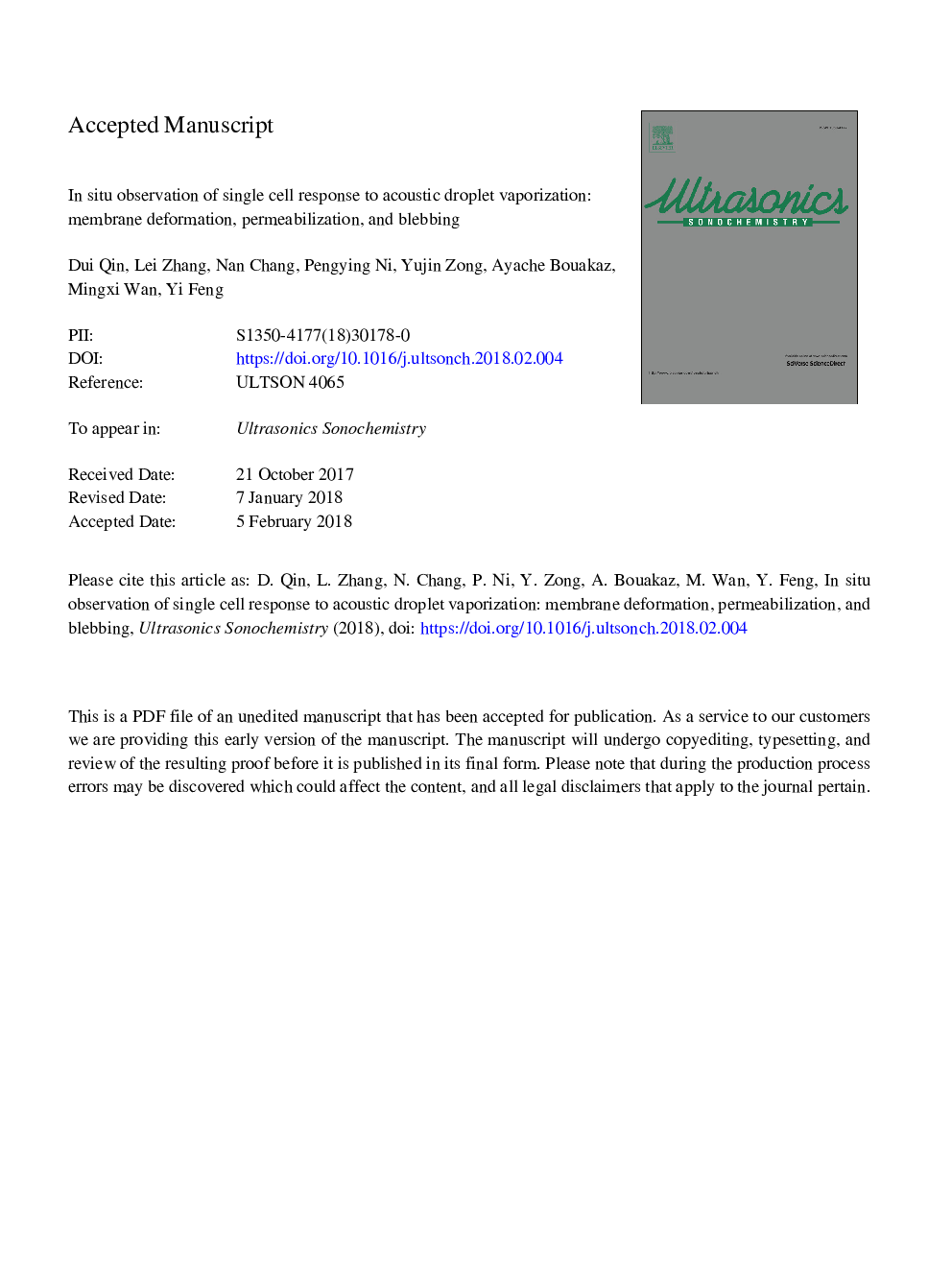| Article ID | Journal | Published Year | Pages | File Type |
|---|---|---|---|---|
| 7702397 | Ultrasonics Sonochemistry | 2018 | 32 Pages |
Abstract
In this study, the bioeffects of acoustic droplet vaporization (ADV) on adjacent cells were investigated by evaluating the real-time cell response at the single-cell level in situ, using a combined ultrasound-exposure and optical imaging system. Two imaging modalities, high-speed and fluorescence imaging, were used to observe ADV bubble dynamics and to evaluate the impact on cell membrane permeabilization (i.e., sonoporation) using propidium iodide (PI) uptake as an indicator. The results indicated that ADV mainly led to irreversible rather than reversible sonoporation. Further, the rate of irreversible sonoporation significantly increased with increasing nanodroplet concentration, ultrasound amplitude, and pulse duration. The results suggested that sonoporation is correlated to the rapid formation, expansion, and contraction of ADV bubbles near cells, and strongly depends on ADV bubble size and bubble-to-cell distance when subjected to short ultrasound pulses (1â¯Î¼s). Moreover, the displacement of ADV bubbles was larger when using a long ultrasound pulse (20â¯Î¼s), resulting in considerable cell membrane deformation and a more irreversible sonoporation rate. During sonoporation, cell membrane blebbing as a recovery manoeuvre was also investigated, indicating the essential role of Ca2+ influx in the membrane blebbing response. This study has helped us gain further insights into the dynamic behavior of ADV bubbles near cells, ADV bubble-cell interactions, and real-time cell response, which are invaluable in the development of optimal approaches for ADV-associated theranostic applications.
Related Topics
Physical Sciences and Engineering
Chemistry
Chemistry (General)
Authors
Dui Qin, Lei Zhang, Nan Chang, Pengying Ni, Yujin Zong, Ayache Bouakaz, Mingxi Wan, Yi Feng,
